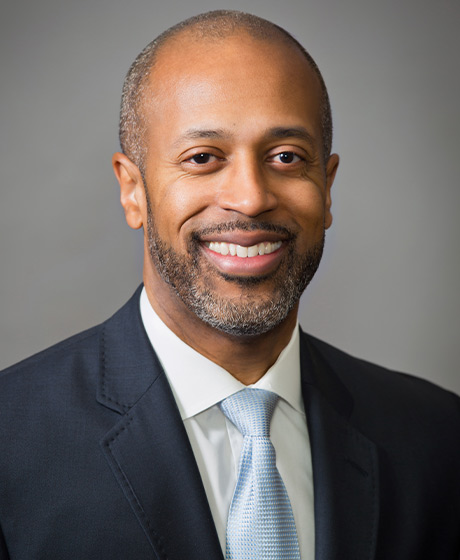
by Vernon M. Billy
e live in an era of constant crisis. Barely a week goes by without some new calamity making itself known. After years of being on high alert, it’s understandable that some people feel overwhelmed. Yet, as daunting as it may seem at times, we can’t shrink from our responsibility as education leaders.
At the two-day conference in Los Angeles, participants attended workshops on effective governance in difficult times, the benefits of supporting board member mental health, budgeting for equity, crisis communications and community engagement. Attendees were also treated to three keynote sessions, including one devoted to hazard preparedness, which I had the pleasure of moderating. I was joined on the panel by Mark Ghilarducci, director of California’s Office of Emergency Services and previously a cabinet member and secretary of the California Emergency Management Agency. Mark serves as Gov. Gavin Newsom’s homeland security advisor and oversees statewide public safety, emergency management, emergency communications counter-terrorism efforts and the state’s threat assessment system.

Collectively, the panel totaled more than 80 years of experience in law enforcement and disaster response and had encountered nearly every threat that schools can expect to confront. It’s no surprise that the panel covered a variety of emergency scenarios, from natural disasters to protests that turn violent to the dreaded school shooter. Yet, as wide-ranging as the conversation was, one event loomed large in people’s minds — the Uvalde massacre. Though that horrific tragedy took place two months before our event, it still cast a pall over the conversation.
Ghilarducci of Cal OES emphasized the importance of remaining vigilant rather than succumbing to the common refrain of ‘that could never happen here.’ “Preparedness needs to be on the front end of your policy discussions and implementation, making sure that your schools, your employees, your students, your staff, your educators, your parents are as safe and secure as possible.”
While very few schools experience an active shooter, the potential loss posed by this scenario is too great to ignore. At the same time, schools must also be on guard against other damaging and potentially lethal scenarios that are much more common. Conducting threat assessments, modeling scenarios, developing policy and administrative regulations, and establishing the proper community and intergovernmental relationships to prepare for a disaster is an essential part of a trustee’s role as steward of the school district or county office of education.
“What are your procedures for your school district and your schools on communication, on coordination, collaboration, preparedness, response, and recovery? What is it going to look like when the earthquake happens at your school site? Do you think you’re just going send all the kids home? What if the community you’re in has collapsed buildings?” Vetere asked. “Our school district has its own hazard mitigation plan. We’ve drilled down into what is impacting our schools. Now, your counties all have one. Most cities will have one, but a school district, as an entity that needs to protect itself, should be looking at doing one of those as well. And your insurance companies can help you fund those — there’s grant funding that can help. I get that it’s a heavy lift, but it’s very important information for you to look at, to understand your vulnerabilities and the things that you need to do better.”
The hazards schools have to prepare for aren’t limited to once- or twice-in-a-lifetime occurrences like major earthquakes. At this point, almost every part of the state has felt the impact of wildfires, either from direct experience, or indirectly from the air pollution they created. So many of our members have experienced the anguish of seeing towns destroyed and homes incinerated — sometimes including their own — while trying to cope with the aftermath and support students and families who have lost everything. In times like those, marshalling community efforts into a cohesive response strategy can make a vital difference for people trying to piece their lives back together.
“We ourselves were impacted by the Caldor Fire last summer, where we had 25 percent of our students and their families misplaced. But during that moment, we had a lot of community collaboration, not just from agencies, local and governmental, but community members,” said Jessicca Rogers, a trustee in the El Dorado Union High School District. “How do we initiate this emergency response and preparedness to include our community members and not just government agencies? We have all these great ideas, but how do I, as a board member, actually initiate that engagement?”
In response to this question, Paulino discussed how San Bernardino schools created an entity specifically to promote community engagement in emergency response efforts.
“What they say is the collective voice is a better voice in terms of the entire community. I’m talking students, parents, teachers, and administrators, across the board, lending their voices to make sure that this process is better. Then, of course, whatever you come up with, there has to be a commitment to see it through,” Paulino explained. “It has to be intentional in terms of a collective body that’s created to be able to recruit people in and give us feedback.”
The panel shared a wealth of information; too much to share here. But rest assured, we will pass along much of the advice in upcoming webinars, articles and other resources for hazard preparedness. It’s clear this is a deep, rich vein of information that deserves to be mined. School and county board members are hungry for information and our students, staff and families need to know that education leaders have the tools required to keep them as safe as possible.
That’s why the panel discussion at Leadership Institute was so valuable. It was incredibly informative for me and for the audience. During the robust Q&A session, it was heartening to see attendees ask probing and relevant questions. The thoughtfulness of the exchanges showed that, once again, California governing boards are taking proactive steps to meet the challenges of the day, no matter how daunting they may be. The stakes are higher than ever before, but it’s clear that our trustees are prepared to rise to the occasion.
